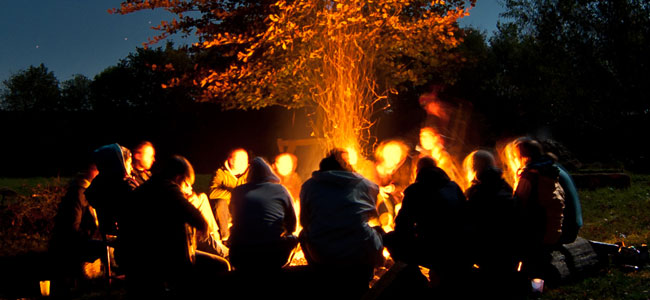Written by guest author Jesse Damiani, Founder and CEO at Galatea Design

Story telling yesterday and in the future. For the past several millennia, our stories have lived in two dimensions. We translated our creative impulses into 2D formats—whether it was around a fire, painting, page, poster, motion picture or video game. But with VR and AR, that’s all changing, and fast; it’s no exaggeration to say that we can’t even begin to grasp what the storytelling content of 2028 will look like. The irony, of course, is that this shift to spatial media just means we have to revert back to our spatial understanding of the world—something we engage with every moment of every day—except now we’re no longer constrained by the physical laws of nature. The stories of the future are not just pieces of content, the spaces for immersive experiences.
The “Narrative Potential” of space. Ask any architect, interior designer, or DIY home-renovator: every space tells its own story. Take the example of a library. When you walk into it, what’s communicated to you? Lots of carpeting muffles sound, and often, high ceilings dissuade us from speaking too loudly. Shelves of books, ample desks, and fluorescent lighting imply a place intended for scholarship. These embedded details drive us to make automatic assumptions about how to behave and what to expect—the “story” of that space in time.These perceptual opportunities constitute “Narrative Potentiality,” the chance for creators to fill the space with information that will kickstart our brains’ native storytelling impulses. If I, as a VR experience designer, seat you in front of a table where a vase is positioned precariously close to the edge, I’m tapping narrative potential by making you think about it falling and shattering around you.
The space is the story. In other words, in VR/AR, the space is the story. It won’t be long before most of the digital materials we currently conceive of as 2D exist as 3D spaces. What might your favorite website or social media page look like as a “real” space?
Living, breathing stories. Buckle up: it gets wilder. Our understanding of stories is rooted in linear storytelling—the model we’ve had since we invented storytelling sitting around the fire with each other. In this model, a teller projects the story, and audiences receive it. It has a beginning, middle, and end. Audience participation (listening) doesn’t impact the outcome in any significant way. Where we’re headed is toward participatory stories that we share with each other in real time—whether we’re talking about AR or VR.
It’s a shift from linearity into semi-linearity and non-linearity, from pre-written stories experienced from a remove to stories optimized for impromptu co-creation (using narrative potential). Think about it, when you show up at a wedding, you have a general sense of what’s going to happen—but the fun of it is the experience of it spontaneously unfolding around you, and your ability to participate and impact it. The memory you leave with is your story of that event. Everybody else has a story too, both similar to yours and altogether unique.
In VR, reality is the medium. A friend of mine put it best: “In VR, reality is the medium.” Science tells us that our brains are incredibly plastic; they have space to carry multiple, simultaneous realities in them. If you’re in a story experience with your mom and she’s a purple alien, you carry two versions of her in your head: human and purple alien. Of course, she’ll be playing with her new identity as a purple alien, so your understanding of her will have to expand to include this new information. The point is: it’s all up for grabs. Want to be able to control a third arm using your pinky finger or two winks? Want to bend the laws of physics? That’s the narrative potential that VR and AR open up for us. The best part is we’ll be sharing in them together.
Disclaimer: We actively write about the themes in which we invest: artificial intelligence, robotics, virtual reality, and augmented reality. From time to time, we will write about companies that are in our portfolio. Content on this site including opinions on specific themes in technology, market estimates, and estimates and commentary regarding publicly traded or private companies is not intended for use in making investment decisions. We hold no obligation to update any of our projections. We express no warranties about any estimates or opinions we make.